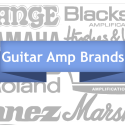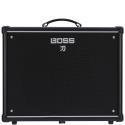Types of Amps and All Their Different Uses
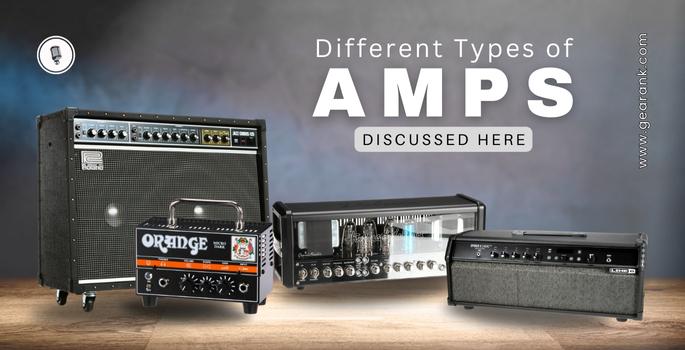
In addition to increasing the projection of your instrument, different types of amps have distinct ways of coloring your sound and impacting your overall playing experience.
When selecting an amplifier, it is crucial to determine which type of amp can best cater to your requirements. This includes factors such as tone versatility, volume, portability, and other benefits.
In this article, I will discuss the different types of guitar amps and their unique advantages and disadvantages.
Let's take a moment to define what a guitar amp is before we move forward with the discussion.
What is a Guitar Amp?
When you start your search for electric guitars, you'll find that there are many things you need to consider. Along with selecting a guitar that suits your preferences and feels comfortable, you must choose a suitable guitar amplifier.
A guitar amplifier is a type of musical instrument amplifier that amplifies the signals produced by your instrument.
Guitars create signals that are weak and insufficient to drive a speaker. Electric guitar amps enhance the weak signal from your guitar and increase it to a level that the amp circuit can work with. The amp uses this amplified signal to produce sound through a loudspeaker, which is usually included in a combo amp or housed in an external cabinet.
A side effect of amplifying the signal is changing its tone. And the degree of change can vary depending on the amp.
A standard amp also has tone shaping, which includes EQ controls like bass, mid, and treble. Some amps have more tone options, including graphic EQs and effects like distortion, delay, or reverb.
Different Types of Amps Explained
Guitar amplifiers are classified into four categories: tube amps, solid-state amps, hybrid amps, and modeling amps. Each amp type has unique tone characteristics based on the electronic components they use.
Specific qualities make one amp more suitable than the others in particular situations. Below, I describe each type of amp and the scenarios they work on.
Tube Amps
Tube amplifiers are the oldest type of guitar amplification, first appearing in the 1930s and remaining the only option until the 1960s.
These analog amps use glass tubes or valves to control and amplify the signal, giving them their name.

Tube preamps are known for their soft-clipping characteristic, resulting in a more pleasing, distorted sound.
At maximum volume, tube amps produce a warm, rich tone that many guitarists seek, especially rock and metal players.
Most purists agree that tube amps are the best type of guitar amp, thanks to their distortion characteristics.
Guitars with humbucker pickups are an excellent match for high-gain tube amps. While the bite of single-coils guitars is better reproduced by tube amps in low to mid-gain settings, which many of the best tube amps can do.
Solid State Amplifiers
The guitar industry adopted solid-state technology in the mid-1960s to reduce production and maintenance expenses, mainly due to the vacuum tubes in tube amplifiers. The classic vacuum tube was replaced with a transistor, which is easier to mass-produce and has a longer lifespan.
For this reason, solid-state amps are also lighter than valve amps. Making them more practical touring or travel options.
And this practicality is the reason why solid-state amps are the most common type that you'll find today.

These amps are mainly analog and use transistors to manage the signal flow within the amplifier. However, some solid-state amps have digital components for effects or modeling.
Solid-state amps have a high headroom and can produce a loud and clean sound. They have a reasonably consistent bright and clean tone, which makes them perfect for genres such as jazz or neo-soul. They're great for single-coil pickup guitars like Strats and Teles.
On their own, solid state amps aren't good with audio clipping, so their distortion doesn't sound as good as tube amps. But paired with amp modeling via DSP (Digital Signal Processing), you can get good overdrive and distortion tones from them.
Outside of the guitar, solid state amps are the most common instrument amplifiers. Many of the best keyboard amp and best drum amp options today are solid state amps.
Hybrid Amps
Hybrid amplifiers are a type of amplifier that combines the features of tube and solid state designs into one device.
For example, a hybrid amp can have preamp tubes while having transistors in the power amp section. This gives you the benefit of tube preamp tone, while having a solid state power amp for working with effects and other gear.
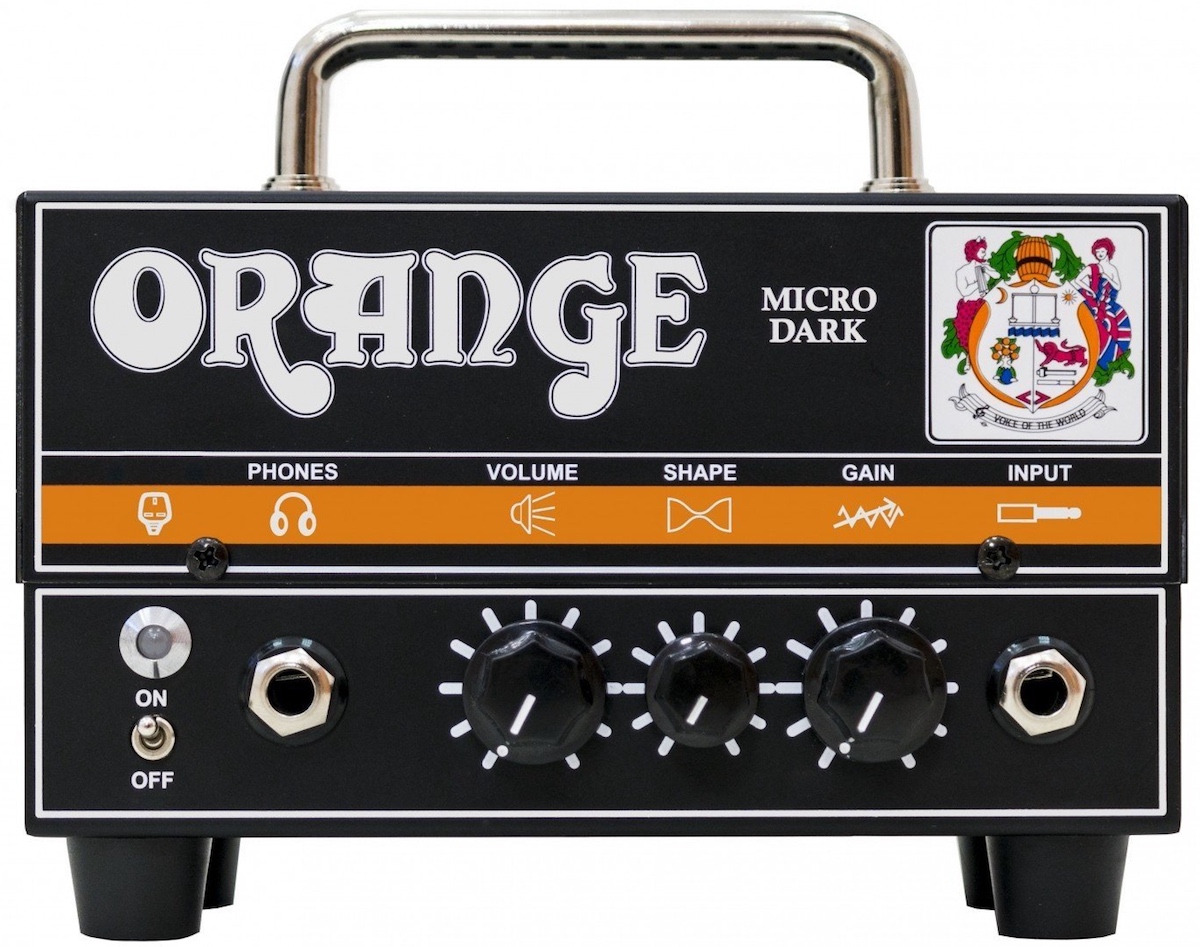
Despite their versatility, most electric guitarists still prefer the analog purity of tube amps. But this preference changes when you factor in guitar processors, which work well with solid-state amps and hybrids.
If you're curious about hybrid amps, check out the Orange Micro Terror line, considered to be among the best cheap guitar amps with a hybrid circuit.
Modeling Amps
Modeling amps are improved solid-state amps that can produce sound using the identical transistors that solid-state amps use.
They mimic the tones of different guitar amps and cabinets using analog means (gain stacking) or via DSP.
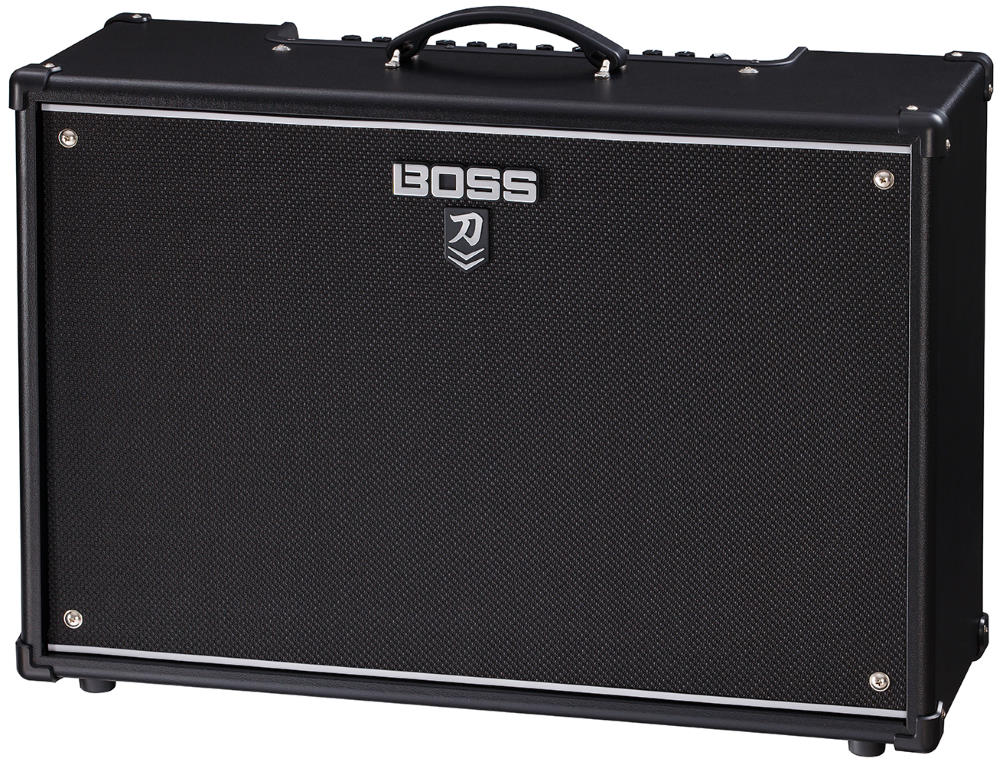
Most modeling amps are digital guitar amps. They use DSP to recreate the sound and response of tube amps without the bulk and maintenance of using actual tubes.
This allows for greater tone flexibility without spending much money on guitar equipment. Users of modeling amps have access to numerous effects, presets, and amp models, and they can also update the software on these amps to improve or replace existing presets.
Initially, modeling amps faced criticism when first introduced in 1982, with some purists claiming that they could never match the tonal richness of their analog counterparts.
Fast forward to today, even trained ears may have trouble distinguishing between digital simulations and tube amps in a blind test setting. And it's only going to get better as technology rapidly advances.
Modeling amps have expanded beyond guitar use. Some of the best bass combo amps now feature amp modeling.
Pros and Cons of Each Amp Type
Tube Amps
Pros:
-
Great feel and very responsive.
-
Distortion sounds warm and natural.
-
Plenty of grit and bite in low to mid-gain settings
-
Easy to get great tones.
Cons:
-
Generally, they have a higher price tag.
-
Vacuum tubes are fragile, requiring extra handling care.
-
Even if not damaged, glass vacuum tubes must be replaced over time.
-
These amps are usually big and heavy, making them difficult to transport.
Solid State Amps
Pros:
-
A solid-state amp is durable and doesn't require much maintenance.
-
Reliable and consistent tone
-
Provides a good platform for DSP processors and analog effects
-
Solid-state amps are much lighter than valve amps.
Cons:
-
Does not have the same warmth as tube amps.
-
Suffers from hard clipping when driven too hard.
Hybrid Amp
Pros:
-
Get the benefit of tube preamp tone with a solid state power amp section.
-
Hybrid amplifiers are lighter than conventional tube amplifiers.
-
Hybrid amps are more robust than tube amps
Cons:
-
Generally bulkier and heavier than solid-state amps.
-
Tubes require handling care and regular maintenance.
-
Not as reliable as solid state amps.
Modeling Amp
Pros:
-
You are provided various amp models and effects to play around with.
-
Digital components don't add much weight and bulk.
-
Modeling amps are upgradeable through firmware updates.
-
Most modern modeling amps integrate easily with computer-based recording setups.
-
These amps are reasonably priced, which makes them more attractive.
Cons:
-
Due to the vast number of features, these amps can be more complicated.
-
ICs and other digital components are not user-serviceable.
-
Since modeling technology constantly improves, you will need to regularly update the software of your amp. Or worse, you will need to replace it with a newer model.
Factors to Consider in Choosing an Amp
Choosing the right amplifier for your guitar is crucial to achieving the desired sound and tone that complements your playing style and preferences.
There are several factors that you must take into account before making a purchase. Your preferred music genre, playing technique, and the type of guitar you own are some of the key considerations that can help you determine the most suitable amplifier for your needs.
To help you make an informed decision, below is a comprehensive list of factors that you should keep in mind when selecting an amplifier for your guitar.
Hardware Factors
Amp Configurations: An Amp Stack (Consists of a stand alone Amp head and a Guitar Cabinet) configuration consists of an amp head and a speaker cabinet. The one that processes the guitar signal is what an amp head is. It also does most of the tone in shaping tasks. Then, the signal is then projected out through the speaker cabinet.
This setup is popular among guitar players due to its flexibility. The ability to swap different amps and speakers creates various combinations that lead to interesting tones.
However, moving requires more space and effort compared to a combo amp since it comprises two separate pieces of equipment.
A combo amp is an amplifier that combines the amp head and speaker in a single cabinet enclosure. Most combo amps are small and are meant for smaller spaces such as bars or studios but may need to provide better sound quality in larger open areas. But there are big combo amps with over 100W of power for bigger venues, but they are bulky and heavy.
Compared to a head-and-cab configuration, a combo amp is less flexible as it does not allow for easy customization of the amp or speaker. But it is a more convenient option for musicians who travel frequently since it is a single piece of equipment.
Channels: Single-channel amps are a straightforward option for those who prefer plug-and-play convenience. This type of amplifier is suitable for those who want consistently good tone without having to tweak settings constantly. Many classic music pieces have been performed using this type of setup, and this amp's vintage appeal adds to its charm.
On the other hand, a multi-channel amp has several preamp channels, allowing for channel switching. This feature lets you switch from a clean to a distorted sound, making it suitable for a broader range of musical styles.
Speaker Size: When shopping for amplifiers, it's important to consider the type of speakers you'll be using.
Different sizes of speakers produce different sounds. Generally, smaller speakers are better at producing high frequencies than larger speakers. For example, a 10-inch speaker will produce better high-end sounds than a 15-inch speaker. While bigger speakers are good at low-end reproduction.
The design of the speaker cabinet also affects the sound produced. Closed cabinets and open-backed cabinets produce different sounds. For instance, a Bassman with a closed cabinet will have a different sound than a Bassman with an open-back cabinet. This is why professionals have their preferred speaker type, brand, and cabinet type.
Many blues musicians prefer using open-back speaker cabinets because they can produce a range of tones, from warm to mid-range emphasis. And to sound larger than life on a big stage, rock musicians opt for powerful 100-watt amp heads driving 4x12" cabinets that look like a wall of speakers.
These days, musicians don't have to bring big speakers to play arenas anymore because PA systems are far more powerful and capable.
Note that some amps (like acoustic amps) are paired with a full-range speaker, having both a woofer and a tweeter. Woofers are large speakers for low to mid frequencies, while tweeters are smaller speakers that produce high frequencies.
Weight and Size: Considering how and where you'll use your guitar amp before purchasing is important. This will help you choose the right guitar amp at the correct size amp for your needs.
For instance, buying a large, heavy amplifier wouldn't make sense if you only plan to perform in smaller, more intimate settings. They will also be cumbersome for road tours unless you have roadies to help you carry your gear.
On the flip side, small amps are great for portability, but they won't be enough if the venue you're playing is big. Best to talk with the audio technicians prior to the gig to know your PA connectivity options.
It is interesting to note that many guitarists nowadays prefer using guitar processors and amp modelers, which can be directly plugged into the PA system. I happen to be an early adopter of this practice and I am accustomed to listening to a wedge or in-ear monitors.
Tonal Factors
Tone Control: Most amps have at least a basic tonal control setup: bass, mid, and treble. With these, you can shape the sound of your guitar. Other amps have additional EQ controls like presence and resonance.
Built-In Effects: Some amps feature effects such as delay, reverb, tremolo, or more. Aside from improving your sound, integrated effects will simplify your signal chain.
If you don't have an external effects pedal or simply don't like them, an amp with onboard effects will surely be great for you.
Distortion Characteristics: Signal distortion in guitar amplifiers varies depending on the type of amp. Soft-clipping tube amps produce a pleasant-sounding distortion while hard-clipping amps create a more aggressive, less appealing distortion.
The preamp channels of an amplifier are where signal distortion happens. The preamp boosts the signal level until it surpasses the amp's threshold and distorts.
The power amp section of an amplifier generally includes a master volume control, which adjusts the signal's volume. When pushed to its limits, the power amp also distorts the sound. The process of managing the signal's distortion or level at each signal chain stage is called gain staging. Like its preamp siblings, a tube power amp has a more musical clipping sound.
Pairing: Different amps have distinct tonal characteristics. Therefore, the guitar sound produced by a particular amp, instrument, and speaker combination will differ.
It is essential to consider how these devices complement each other to achieve the desired tone. Your guitar tone will sound fantastic when paired with the appropriate guitar amp or speaker.
If you're going for a tone inspired by a specific guitar player, look at the amps and gear he uses and find something similar.
Electrical Factors
Wattage and Volume: The wattage of an amplifier determines the volume it can produce. An amp with low wattage can produce a lower volume in smaller, enclosed venues such as a room.
However, if your playing guitar at a larger venue like an arena or concert hall, you will need an amp with higher wattage to provide a higher volume to fill the larger space.
Furthermore, amplifiers with high wattage have more headroom, which means they can reach higher volumes before the sound becomes distorted or muddy.
Other Factors
Usage: Get the amp that's specific to what you want to do. There are practice amps meant specifically for honing your chops, these are usually small amps. There are amps meant for use with headphones - check out our best guitar headphone amp recommendations, which are great for quiet practice. There are amps meant for desks in a home studio setup. And there are versatile amps with built-in attenuation, which lets you crank them at lower volumes for recording or practice.
Brands: In most cases, a brand's reputation is indicative of the quality of its product. Additionally, each brand can be associated with a specific tonal characteristic or sound.
For instance, the Mesa Boogie amp is a tube amp that is highly regarded for its quality and metal-friendly tone. It is widely used by many professionals, especially metal guitarists, for recording and touring purposes. If you play acoustic are in need of acoustic amps, Fishman offers some of the best acoustic guitar amps, like the Loudbox Artist.
For a loud-sounding amp with plenty of clean headroom, Fender is known for some of the best solid-state amps, namely their "Tone Master Series."
If you're a beginner or a hobbyist playing at home, the Boss Katana 50 MkII is one of the best practice amps available.
Final Thoughts
Different types of amps have distinct features, and these can be beneficial or detrimental to your playing. Knowing the type that will benefit you the most is key to getting a good guitar amp.
If you want nothing less than tube warmth, then go for a tube amp. If you want a reliable and consistent-sounding amp that's great for pedals, then the best guitar amp for you would be a solid-state amp.
For a more processed and precise sound with limitless tone-shaping options, digital guitar amps are the way to go.
If you travel frequently, opting for a more compact and lighter amp is best. If you usually play at the same venue, then you can choose bulkier equipment, particularly if you want excellent sound quality.
At the end of the day, there is no one guitar amp type that can address the different needs of guitarists. This is the reason why professionals usually have multiple amps to cover the different uses.
Frequently Asked Questions
What is an Amp Profiler?
An amp profiler is a digital amp that enables you to store a digital copy of your amplifier's tone. By profiling your physical amp, it lets you reproduce. the unique sound of your amp on demand.
Amp profilers let you showcase the tone of your best amps without having to lug them around for gigs.
Can a Small Amp Be Connected to a Large Speaker?
Yes, it is possible to connect different speakers. However, before doing so, it is important to ensure that their impedance matching, power handling, and wattage are compatible. This is to avoid any risk of damage.
Remember that smaller amps will produce less wattage, resulting in a less powerful sound. To fully utilize the capacity of your larger speaker, it is recommended to use a larger amp or one compatible with your speaker.
What Kind of Wattage Is Best for a Guitar Amp?
The wattage of your amplifier should match your guitar playing conditions.
Generally, a power of 50 to 100 watts is enough for most players. Such amplifiers are suitable for recording, jamming, or performing at small-to-medium-sized venues.
Lower-wattage amps are meant for home practice or smaller venues.
Amps that come with power attenuation let you switch from high to low wattage as needed.
Contributors:
- Jerome Arcon - Co-writer
- Jerry Borillo - Illustrator



